Garden Glimpses: July Jewels
The daylily garden is really beginning to take off. Some of the plantings are now in their third year on the property, and it shows. I have one stubborn year two variety that just won’t bloom – Exotic Love. Rather fitting, don’t you think, as elusive as love can be? But all seven of the new first-years gave me something, which is unusual. Small and sparsely budded, they bloomed out early, but as a group they have done better in their first season (by percentage) than the prior plantings. They are in a prime location, ringing the seating area atop the sandmound, in full sun, so I’m sure within a couple more years they’ll be as voluminous as the rest.

Assuming the drought doesn’t get them first. After a fairly wet spring, we’ve reverted to what, sadly, has become the norm for us. With rain it’s feast or famine in the summer, with long dry stretches punctuated by tropical system deluges. We haven’t had one of those yet this year (about which I have mixed feelings, since hurricane remnant precip often leads to a flooded basement for me), and in the last week of June, got only a third of an inch of rain; for the first half of July, just a tenth!
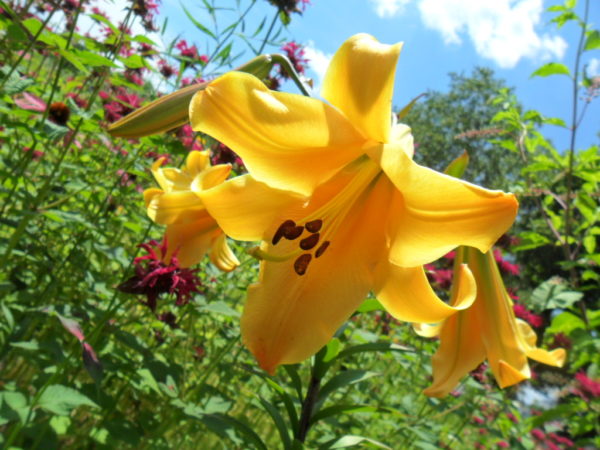
So I’m back doing my plant version of Gunga Din, carrying water nightly to the worst afflicted, which is a long list. Having run the well dry again once last weekend (it refills in about three hours, but is a very scary situation), I’m looking into a rain barrel system to reclaim roof runoff, but of course there’s no runoff if there’s no rain. In the meantime, the barrels are pretty much just garden art. I’m eternally thankful that I chose to reserve so much of the property for natives, which don’t need near as much water support. We finally had a few strong storms come through last night which dropped just under half an inch; that should be plenty to keep the natives going awhile, though it won’t even give me a day off water patrol for the imported perennials.

But enough of the trials and tribulations of gardening in the era of climate change – let’s just enjoy the beauty while we still have it, shall we?
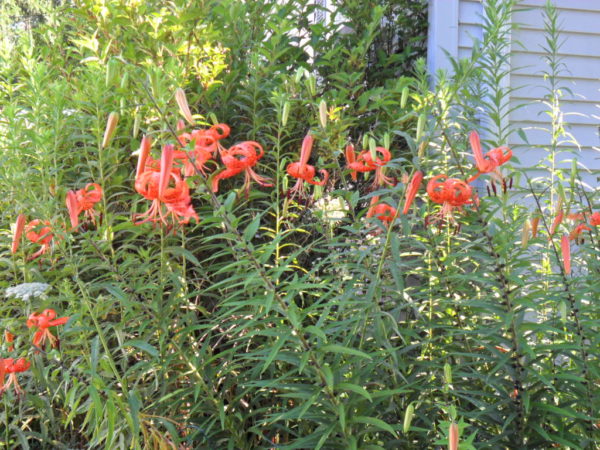
And of beauty there’s plenty to go around just now. The magenta bee balm is past its peak, but still lending showy splotches of color to the landscape, mingled now with the pure white of Queen Anne’s Lace, the drowsy pinky-lavender of purple coneflower, the brown-centered gold of rudbeckia and the vivid yellow of heliopsis, all in mid-season form.
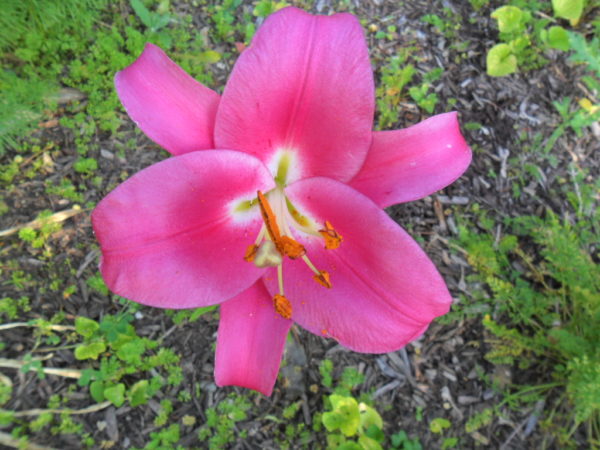
The orange-and-black Forever Susan Asiatic lilies are long since past, but a there’s still a few blossoms remaining on my Pink Giants, towering above almost everything else in the garden by a good yard or more. Stargazer is now at peak, bursting with hot pink and white flowers, while the speckled orange tones of Tiger lilies are just coming into their own. And it’s been a long wait, but finally, African Queen has come through! Its trumpet-shaped, downward-turned blooms in rich golden yellow are supposed to show dusky purple on the lower extremities of the outer petals, but I’m not seeing that. Pretty much solid yellow, but I’m not complaining – it’s a tall, elegant bloomer, finally come to flower in its third year here. Perhaps as it matures we’ll see some of that purple emerge.

Another delayed gratification lily was one of a set of six I bought in 2020; only five came up that first year, I lost two in the following year, and now is the first bloom from the remaining three. Unidentified by the grower, I have no idea what’s included in this “Asiatic Mix”, but the first to flower is encouraging. A single stem is topped by a single bud in florid pink, a lovely addition to the Asiatic collection, even if its growth and spread is agonizingly slow.
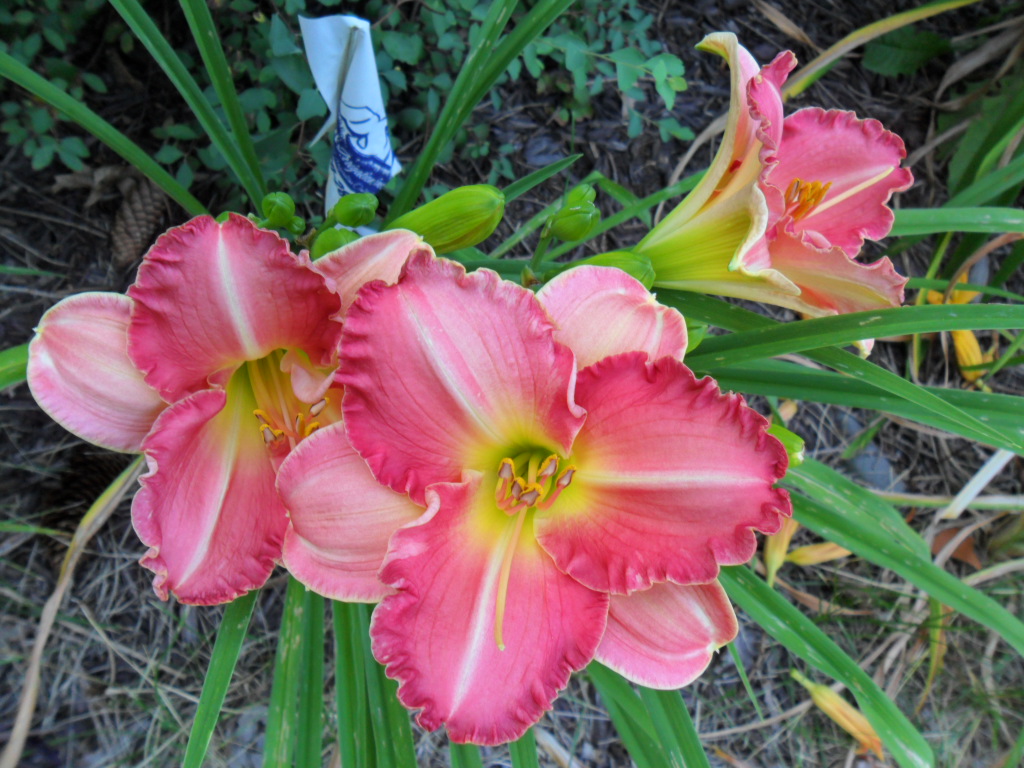
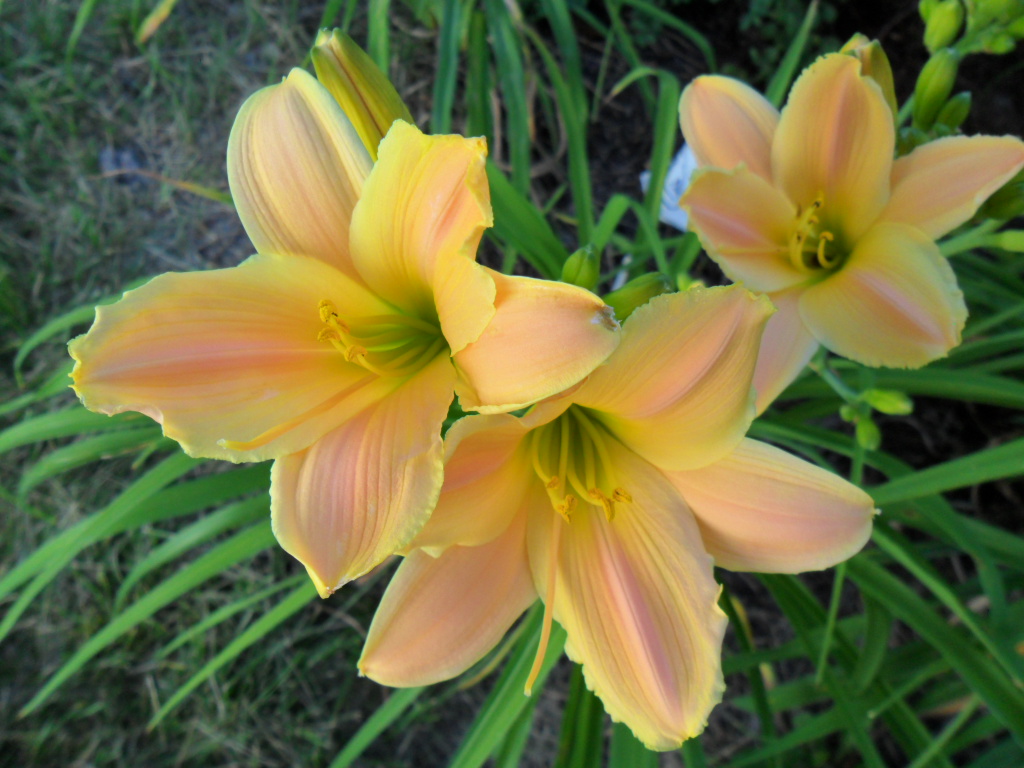


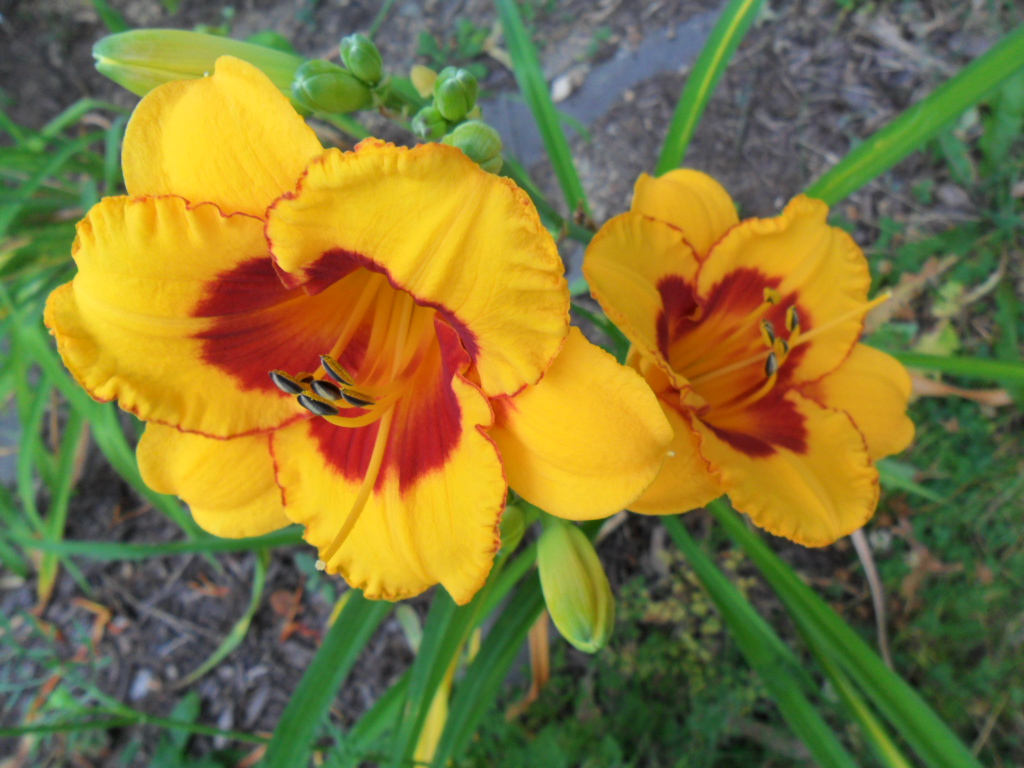
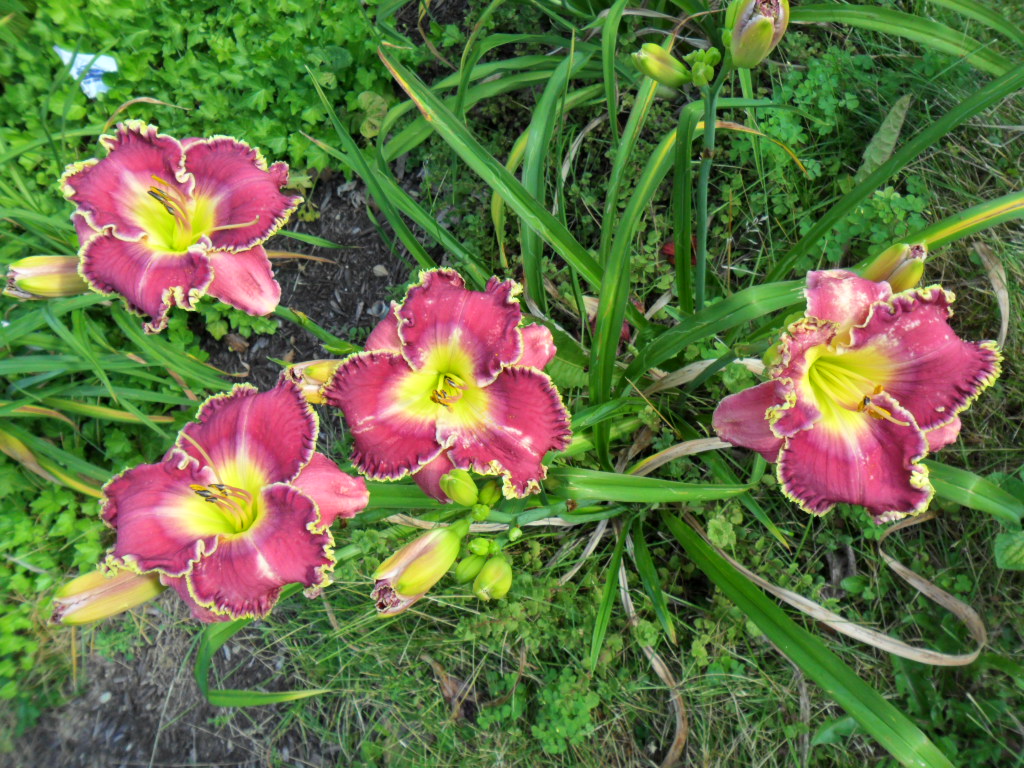
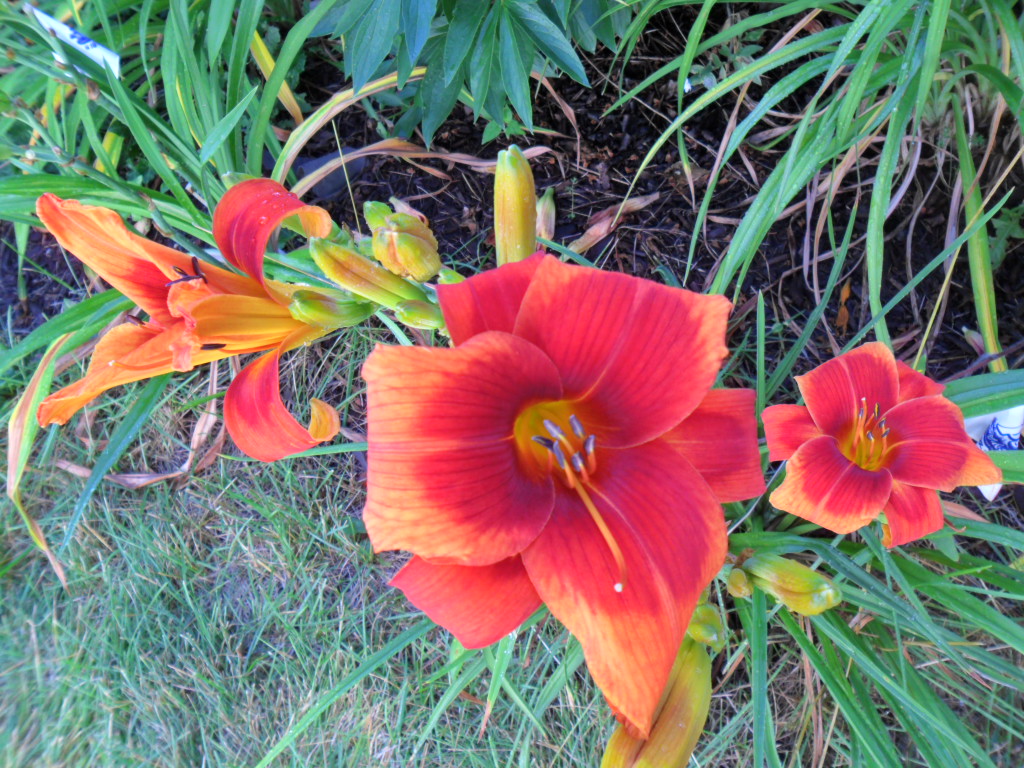
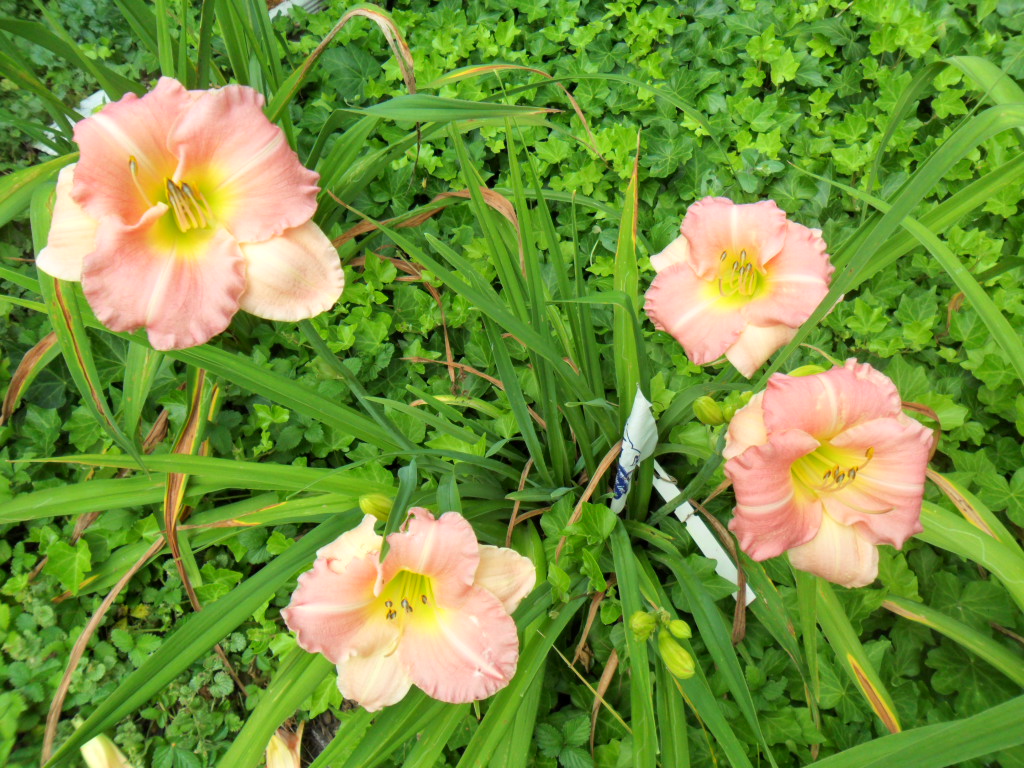
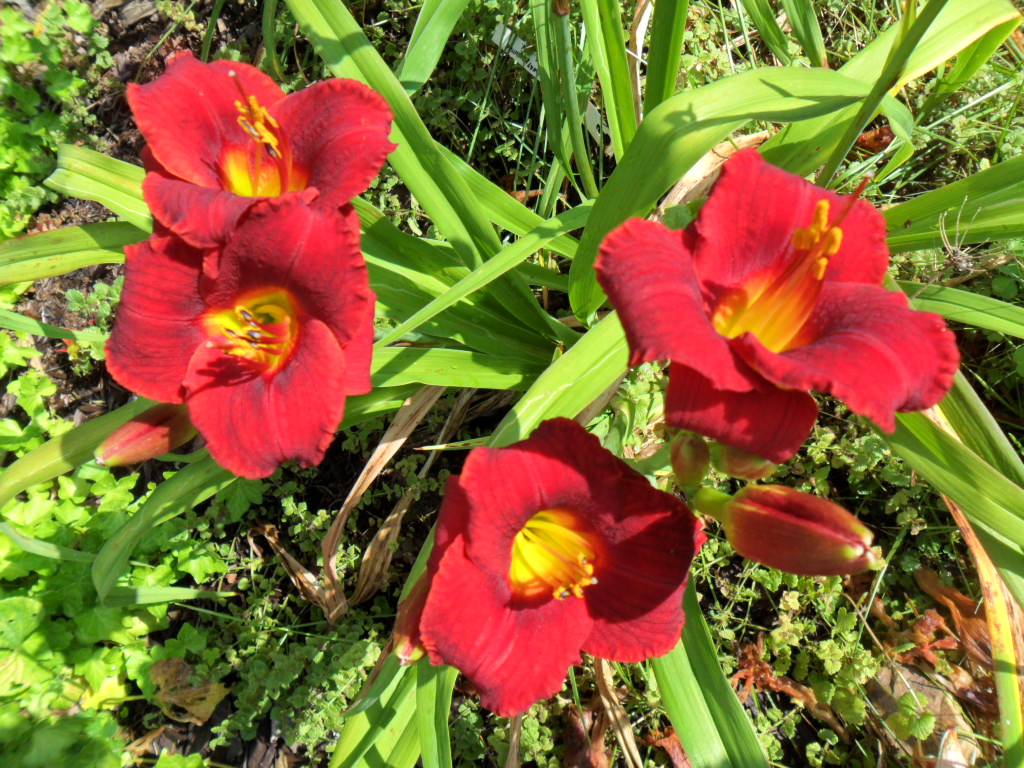
(Click for a larger view)
But of course the Queen of the summer is the daylily. I have almost fifty varieties on the property now, and the third week of July is their heyday. As noted earlier, all species but one gave me blooms this year, affording a wide cross-section of the myriad colors available. Many of the second-years are blooming for the first time, and it’s been wonderful getting to know them.
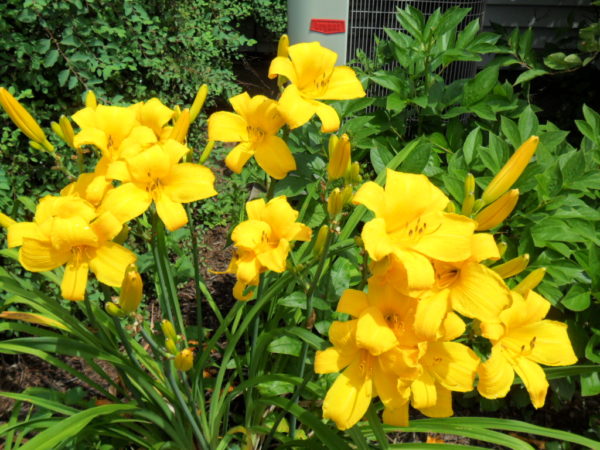
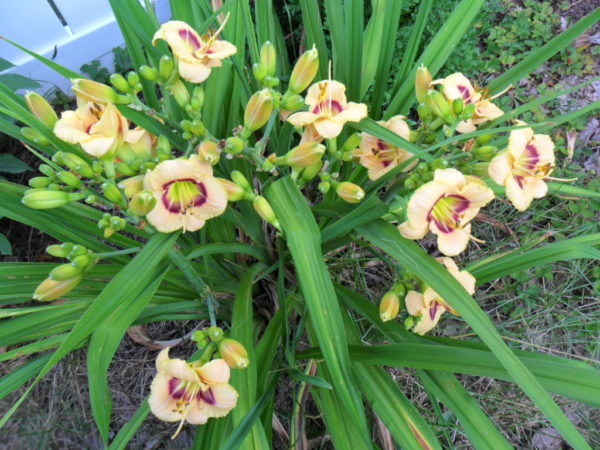
Chicago Silver was one of the first newbies to reveal itself; with an inner set of three petals in a deep burgundy red and an outer trio in dusty rose, it sports a thin “lip liner” of silvery white at the edge of the petals and a lime yellow throat. Just down the row is Antique Rose, a lovely ruffled-edged variety, similarly divided, with three deep classic pink petals interior, backed by paler versions behind, all with a bright white midline stripe and a paler yellow throat.
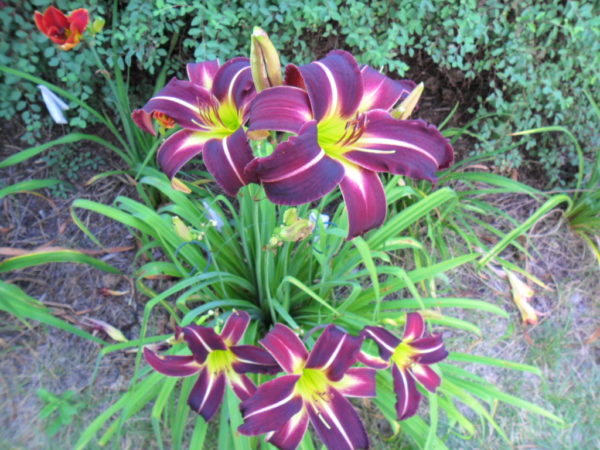
Creature of the Night debuted this year as well, and it was well worth the wait! Large, deep purple flowers are punctuated with narrow yellow-lime throats that pop against the dark backdrop, and send paler but dramatic midline stripes out to the tips of the petals. As noted above, Exotic Love has yet to favor me with a bloom, but the rest of the second-year plantings are coming in more vigorously and blooming more profusely than I could have imagined.
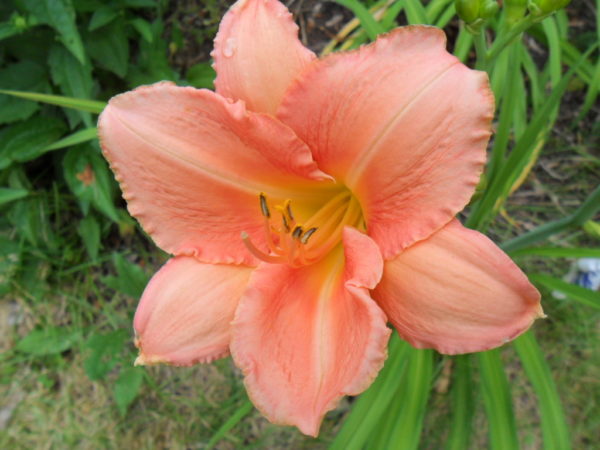
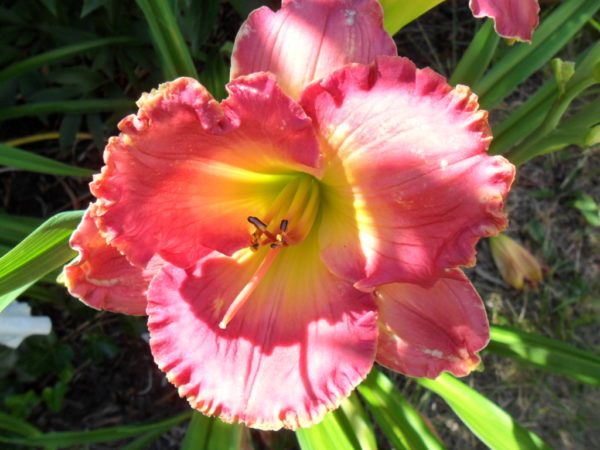
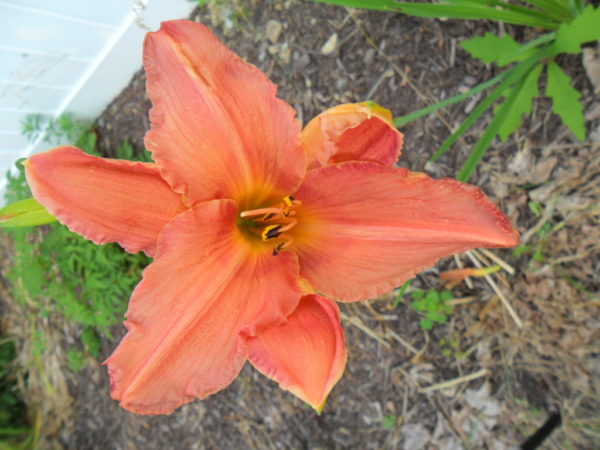
To name just a few, from rose-lavender Martha Thombley, yellow-and-mauve Blackberry Sherbet and rich claret Broadway Valentine to eye-popping orange Outrageous, salmon-pink Mokan Delight, and burgundy-black Vintage Bordeaux, the increase in overall size, number of scapes, and daily blooms has been incredible.
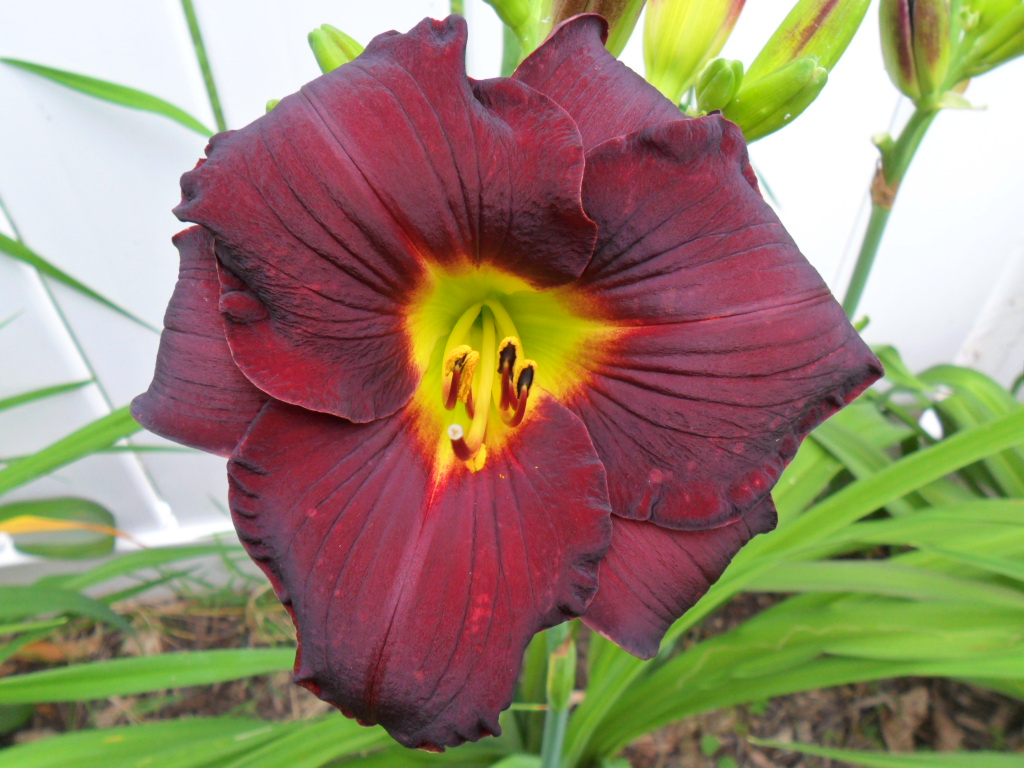
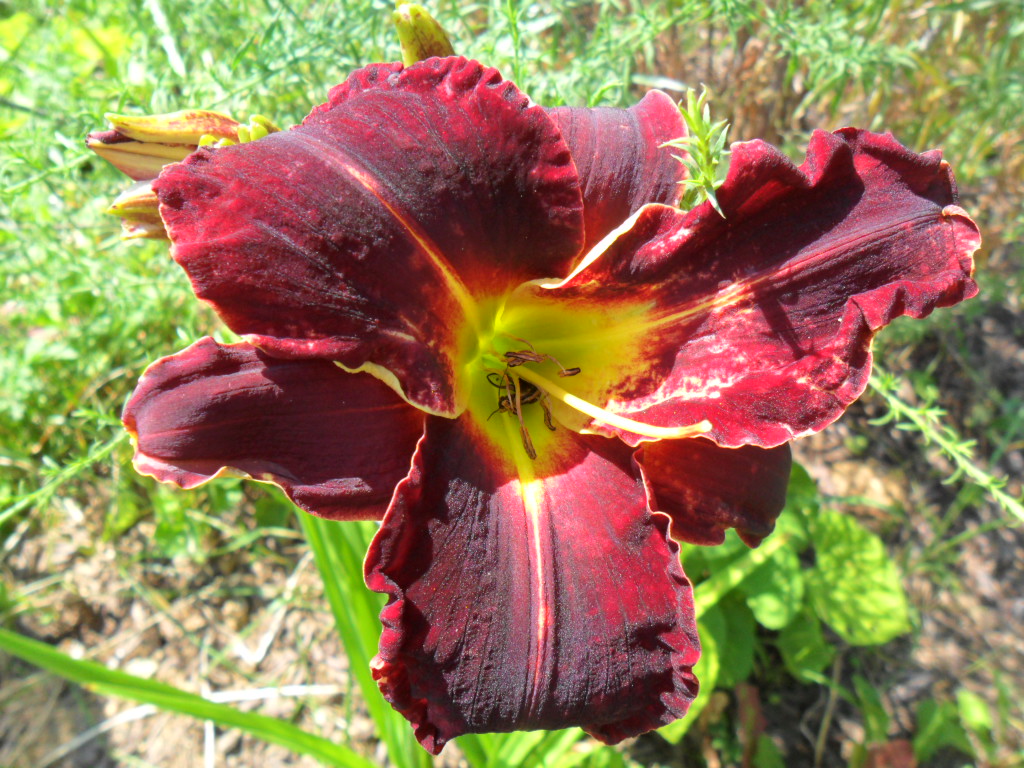


(Click for a larger view)
Still, they haven’t got a patch on the first-years! This group of 19 has spread so well that division of some might be in order this fall, but I’ve decided to go at least one more year before I split them up. I must confess, this is purely greed talking – when you have over a dozen scapes and scores of blooms from one plant, it’s hard to let go, however beneficial dividing might be. Buttered Popcorn is perhaps the most prolific; I counted 17 scapes on the larger of two plants, each with more than a dozen buds – you do the math. I’ve had as many as twenty-four blossoms open at one time, making for a stunning display of a saffron yellow so bright and garish it really does look like the fake butter they use on movie theater popcorn.
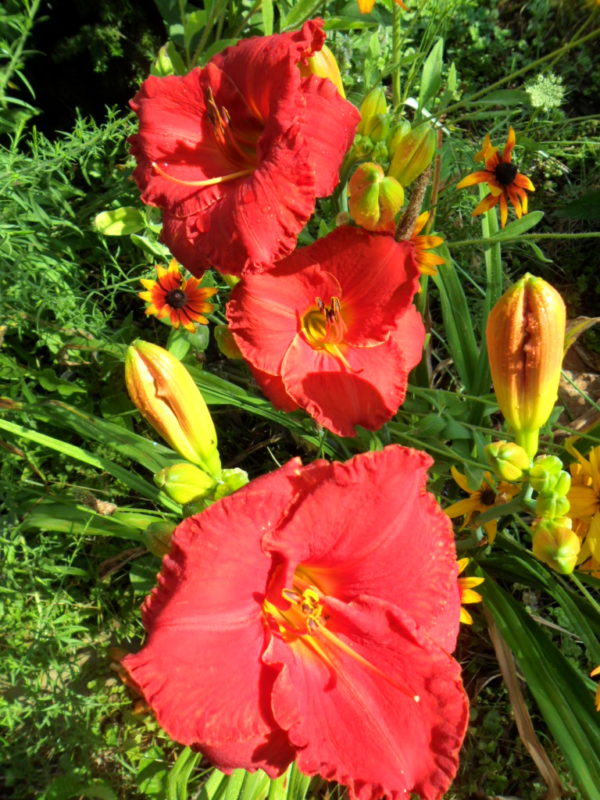

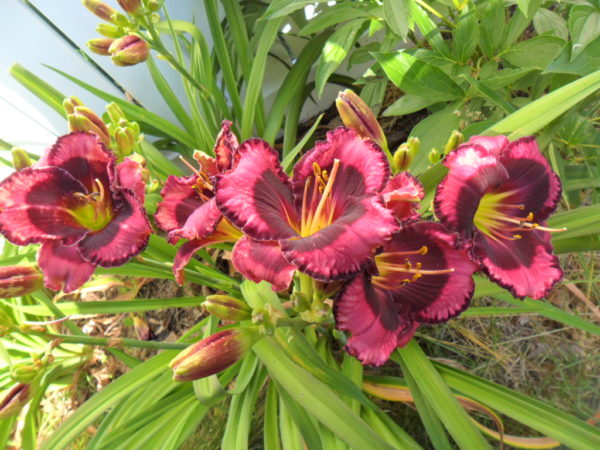
Red-orange Desert Flame, pinky, white-edged Raspberry Eclipse, rosy Scottish Fantasy, purple-and-black Storm Shelter and cream-and-indigo Inkheart have all grown to dominate their beds, with butterscotch Collier, diminutive-flowered pale yellow-and-dusky rose Baby Moon Café, burgundy Double Pardon Me and peach-and-purple Hungry Eyes not far behind.
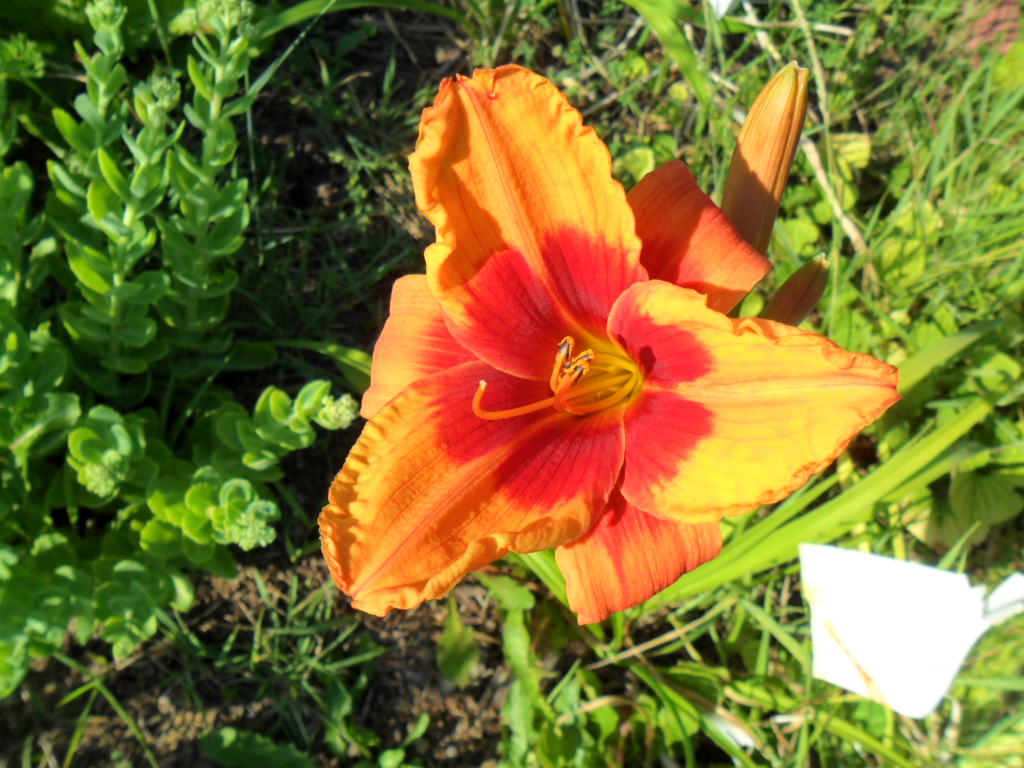

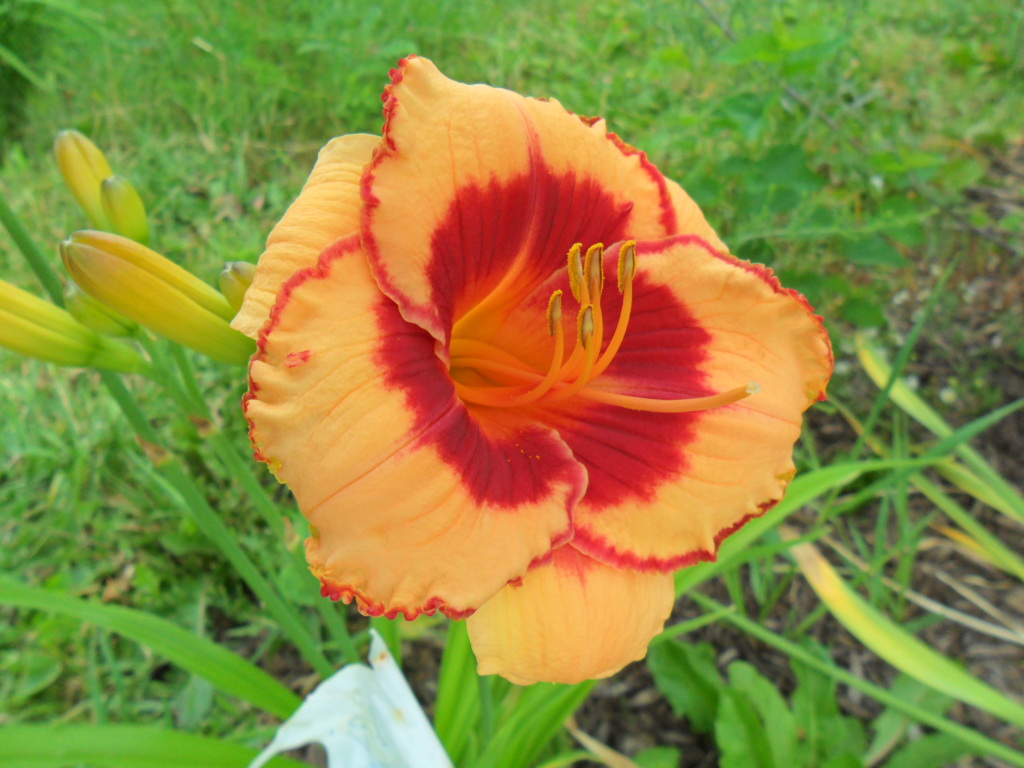
The eyes have it! Backdraft (left), Water Witch (center) and Kiss the Girls (right) are all first-years with stunning burgundy-brown eye markings over rich amber tones (click for a larger view)
The newest members of the daylily family aren’t to be scanted either, albeit their first-year offerings were less than stupendous. Hedging the seating area on the top sandmound bed, they’ll provide a welcome midsummer burst of enticing color as they mature over the years. But each has graced me with a sampling of their blooms, the only group of daylilies to do so in their premiere season. Water Witch’s pale lavender blossoms contrast with yellow-and-brick striped Ribbonette and warm butterscotch Kiss the Girls, with its deep rose eyes and trim on ruffled petals. Also here is darkest burgundy Ed Murray, classic purple-mauve Ethiopia, amber and orange-throated Backdraft, and Double Dragon, perhaps the most unique daylily in the collection. With six outer petals of caramel eyed in burgundy brown, Double Dragon sports an inner set of erect petals that are so tightly ruffled as to be almost folded in on themselves.

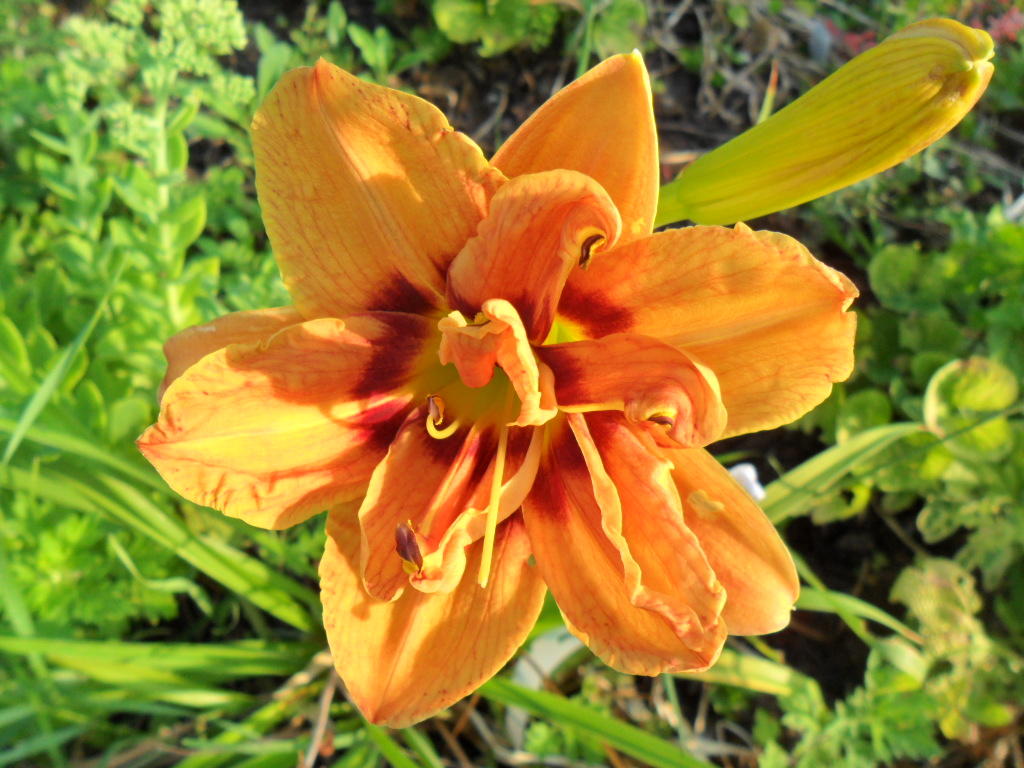
(Click for a larger view)
I often fail to mention the masses of Sammy Russell daylily, perhaps because I’m so familiar with them, but they are simply stunning right now, forming huge patches of vivid red-orange blooms with garish yellow throats. These were originally foundation plantings left from my parents, which we moved into the new beds and along the south slope of the sandmound, so the stock goes back forty years at least on the property, probably longer. We never knew their name, and always called them “fire lilies” for their color, but Kim at House of Lilies (my local daylily farm) helped me identify them last year. One huge benefit of Sammy Russell is that it’s a late bloomer, just starting as other varieties fade, and with so many in the garden, it keeps that color coming well into August.

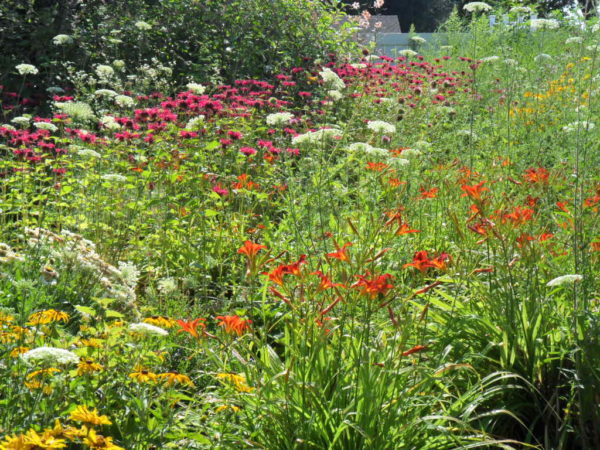
The daylily peak season isn’t all that long, perhaps three weeks, and the individual blossoms, of course, last only a day, so their beauty is fleeting at best. Some smaller plants can’t be relied on to provide even one bloom daily, but as they mature, this will be less of an issue. Their dominance in the garden may be short-lived, but pound for pound, nobody puts on a better show!
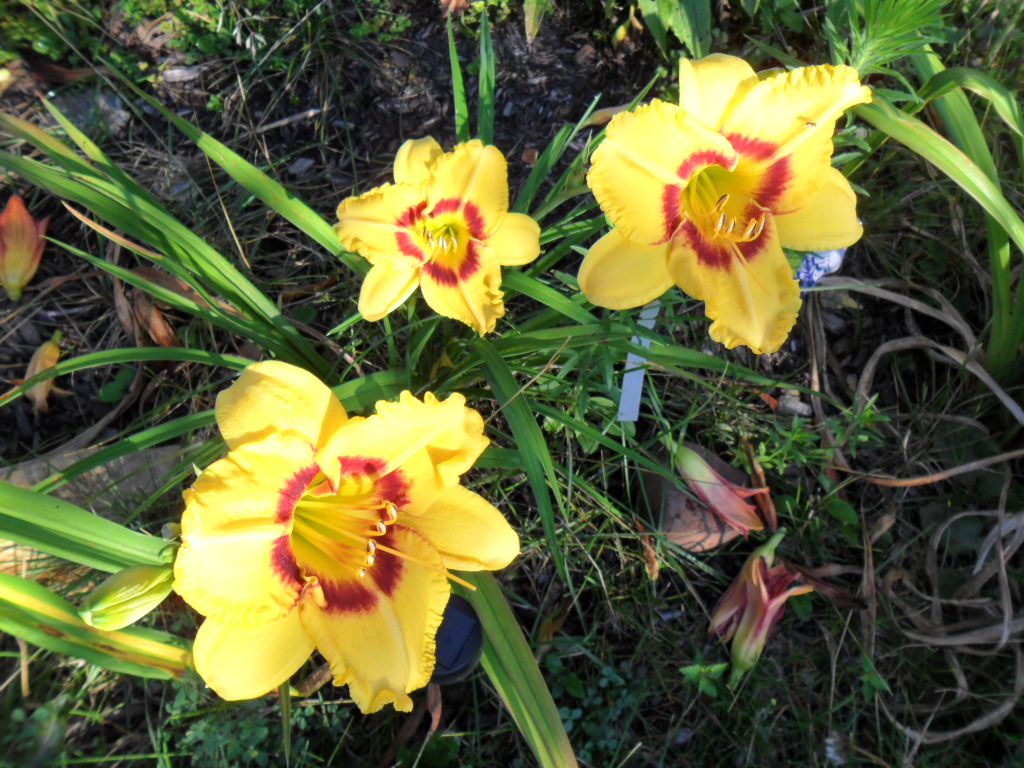


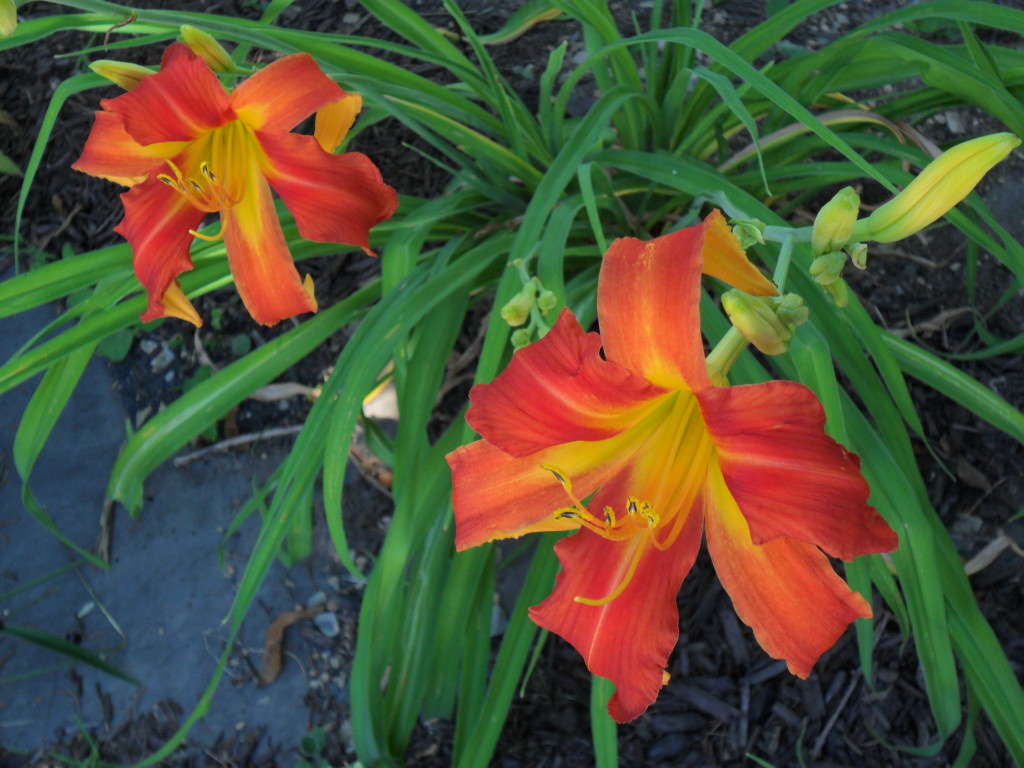
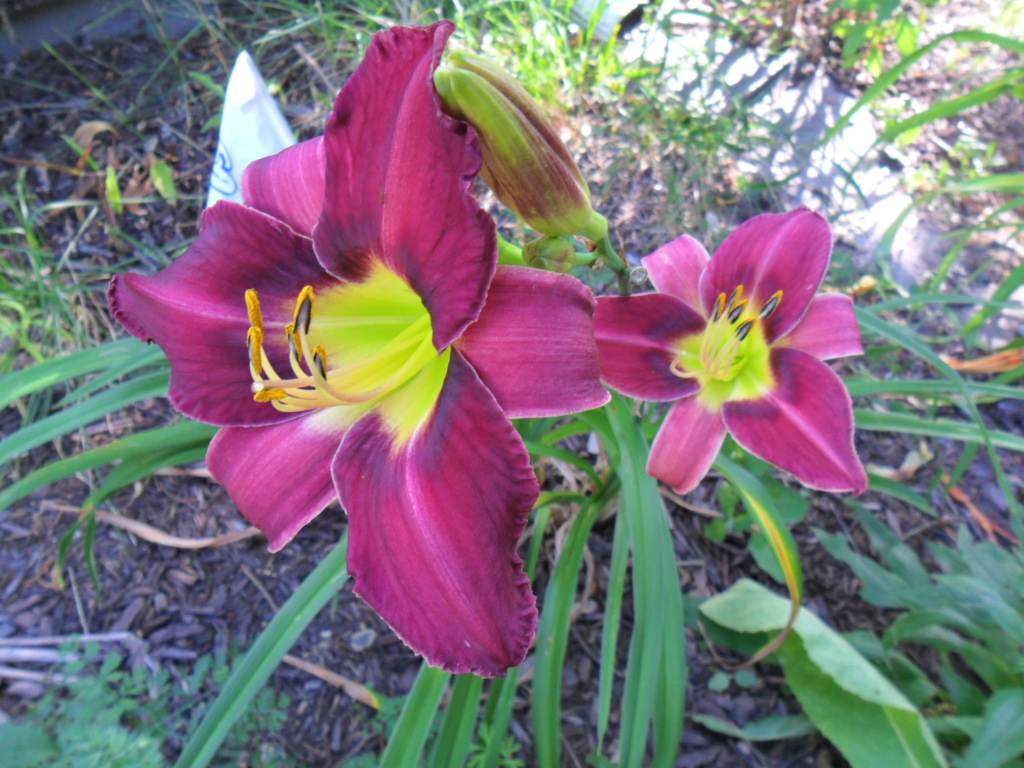
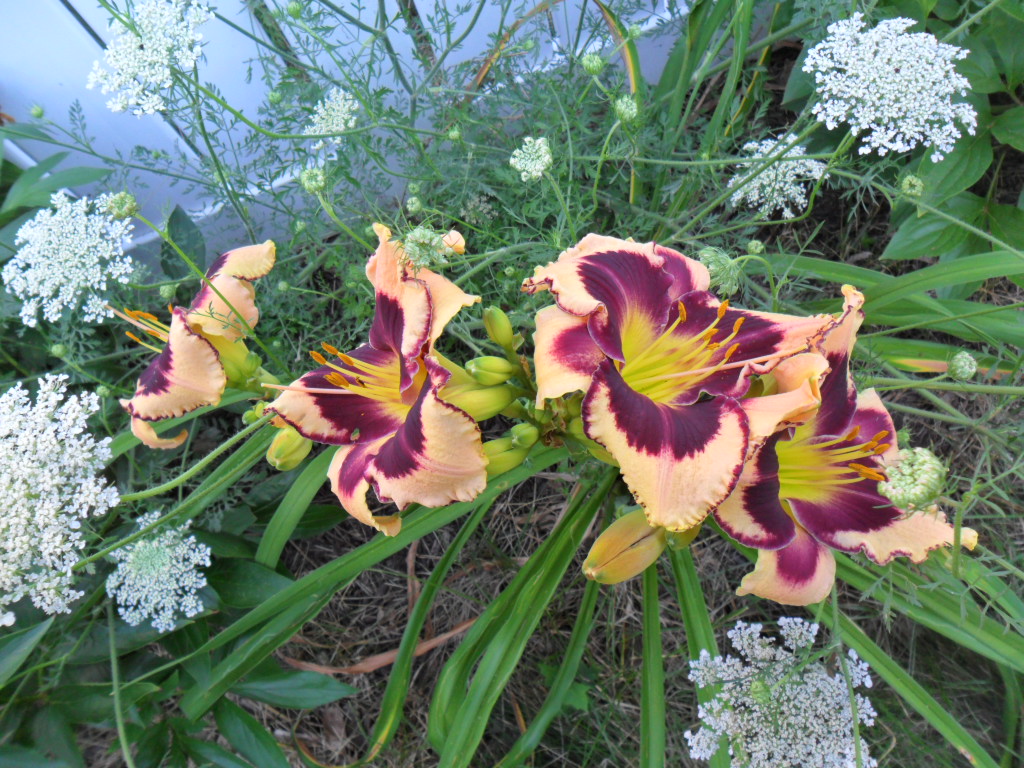
(Click for a larger view)
In other garden news, the second year for Joe Pye Weed has seen a huge jump in production, with its frizzy-fuzzy bloom heads in medium purple-pink reaching as high as the eight-foot fence. I bought this “dwarf” variety by mistake: attracted to its drought tolerance, I failed to note its smaller size, but it’s rapidly gaining heights similar to its 10-foot cousins, well above the advertised five foot maximum.
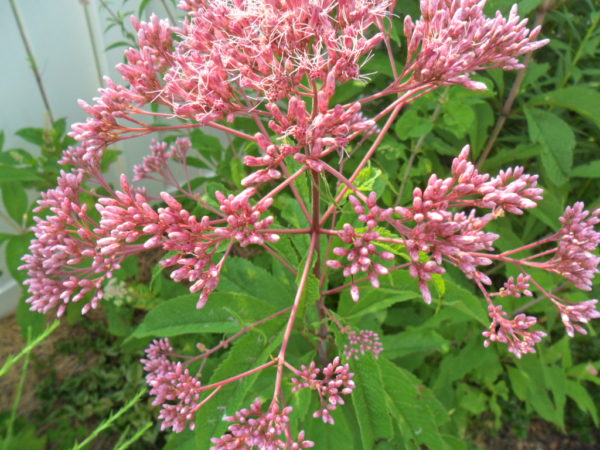
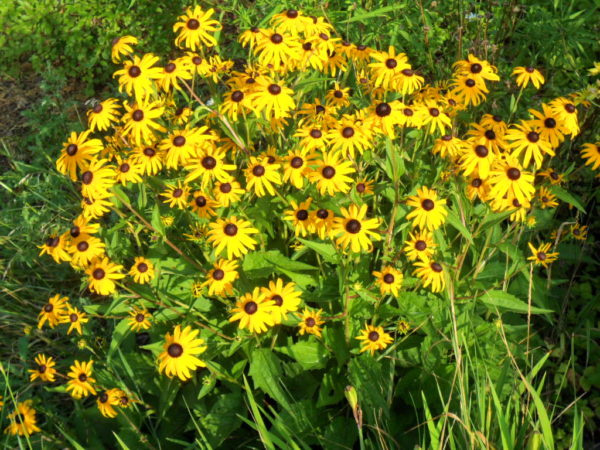
Another fuzzy pink is my late-flowering astilbe, just favoring me now with its blossoms, more than a month after its fellows have bloomed out. I enjoy its aerial, ephemeral quality, a floral attribute not all that common, and it’s great to have one lag so far behind the others, extending their season. The purple-black cornflower continues to churn out blooms nearby, and just a bit further on, a pair of self-seeded rudbeckia are brightening their patch of turf at the sunny edge of the shade garden. Bright crimson Cardinal Flower is just starting to open, and the hostas are contributing their tall spikes of pale lavender-to-white bell-shaped blooms.

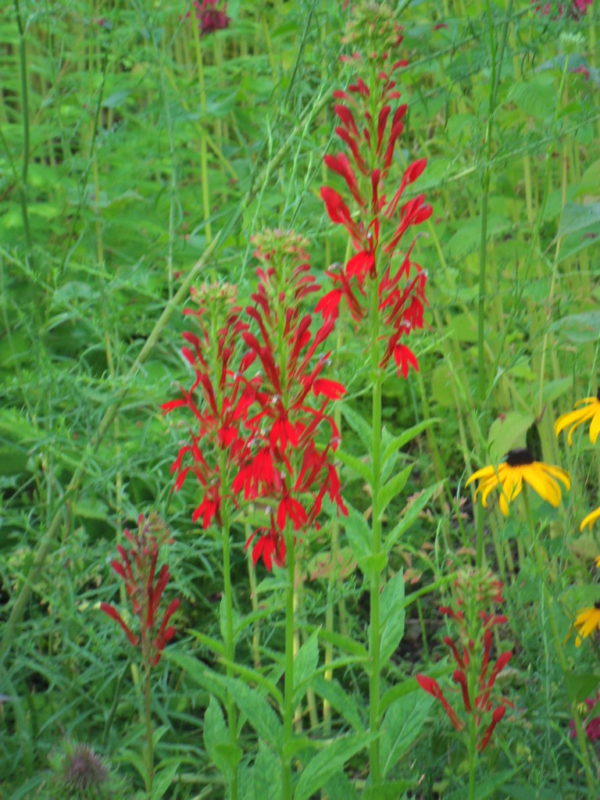
Another over-performing “dwarf” variety is the Butterfly Bush, which comes in at well over six feet (that doesn’t sound too dwarf, does it?). Its long medium-pink bloom heads are catnip to pollinators; I’ve seen Monarch, Black Swallowtail and Tiger Swallowtail butterflies sipping nectar at one time, along with Hummingbird Moth and of course, bees. The new helenium in that sandmound bed, Mardi Gras, is about at peak, and a good two weeks ahead of its fellows in the garden in this its first year on the property. The mixed bright fire tones of its large-centered buttonlike blossoms will fade to ocher, but remain attractive.
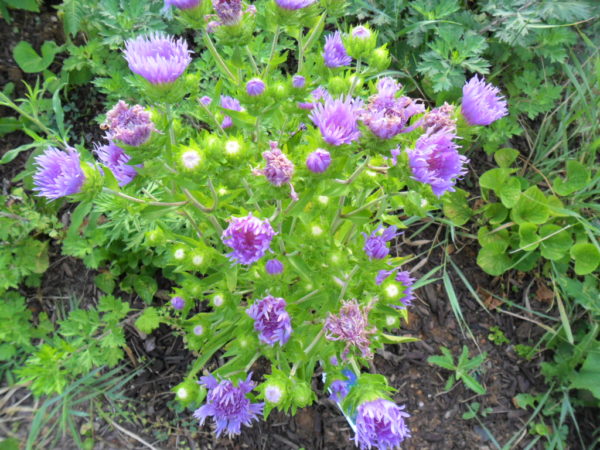

Blue Aster is also starting to pop, a pale blue-lavender in color, with an aster’s typical “fuzzy” appearance. The new heliopsis is a disappointment – the grower must have mislabeled it, because it’s just a standard bright yellow, not the orange-eyed beauty it was billed as. It’s lovely anyway, but I already have six that are identical. Still, they’re good performers, remaining in bloom for well over a month, and making great dried flowers when cut at peak.
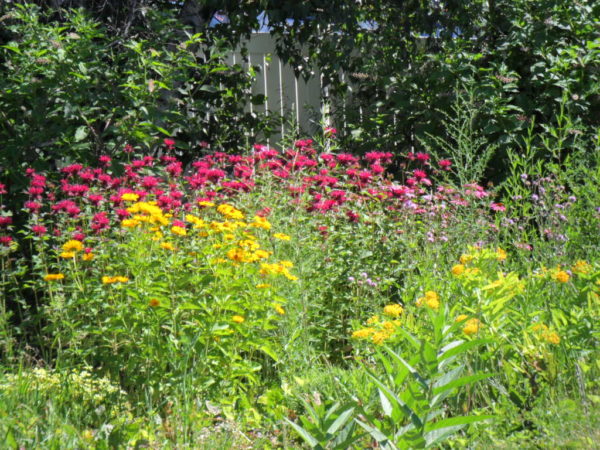
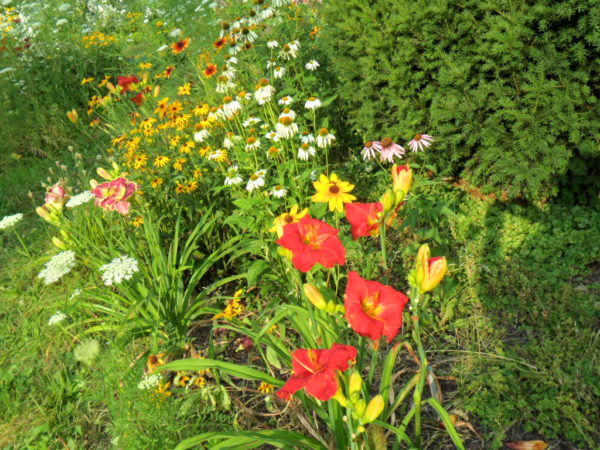
In a few weeks we’ll be well into the August doldrums, with most summer perennials bloomed out, waiting on goldenrod to start to fill in the color gap late in the month. But for now, we can make hay (and carry water!) while the sun shines, with a panoply of floral material filling the garden to the brim.
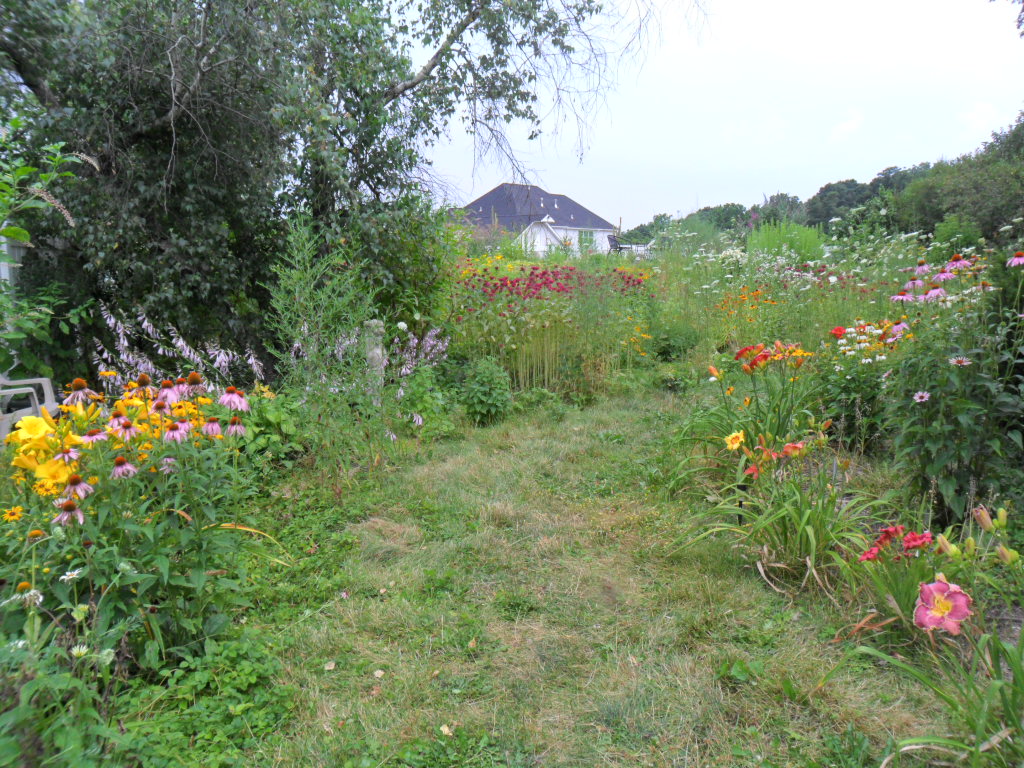

3 comments, add yours.
Laurien
I enjoyed your garden and especially the day lily photos immensely, Alex! I am a big day lily fan even though I admit I only have three of my own. They too are just beginning to bloom. I was really captivated by your African Queen, Creature of the Night, and Inkheart. Your garden really has filled out since you first began sharing photos of it. You’ve done a really impressive job! I hope you get some more rain soon and that your well doesn’t run dry…but not so much rain that your basement floods! Thanks so much, Alex! Keep on gardening!
Mary Kay
Beautiful! you have quite a green thumb.
Greg
I’m Laurien’s friend Greg in Japan. Laurien has been forwarding your garden updates to me for a couple of years, and when I mentioned to her recently that my gardening website had a visitor from Nazareth, Pennsylvania, she said it must have been you. Thank you for taking the time to check out my garden, which is much less mature than yours. Although my climate is warmer and wetter than yours, there’s a lot of overlap in what we can grow. Like you, I’ve got monardas, rudbeckias, Joe Pye weed (‘Baby Joe’), echinacea, and a day lily (sorry, only one kind). But I’m in hardiness zone 9, so I can also grow strawberry guavas, Lantana camara, palm trees, and gardenia. For someone originally from Saskatchewan, this is almost too good to be true. The muggy heat sometimes gets me down , but I’m usually back in the garden at 6 a.m. the next morning. I sympathize with your erratic rainfall. The same thing is happening here, with less frequent but more intense rain. I will continue to watch your site for gardening inspiration. Dig on!